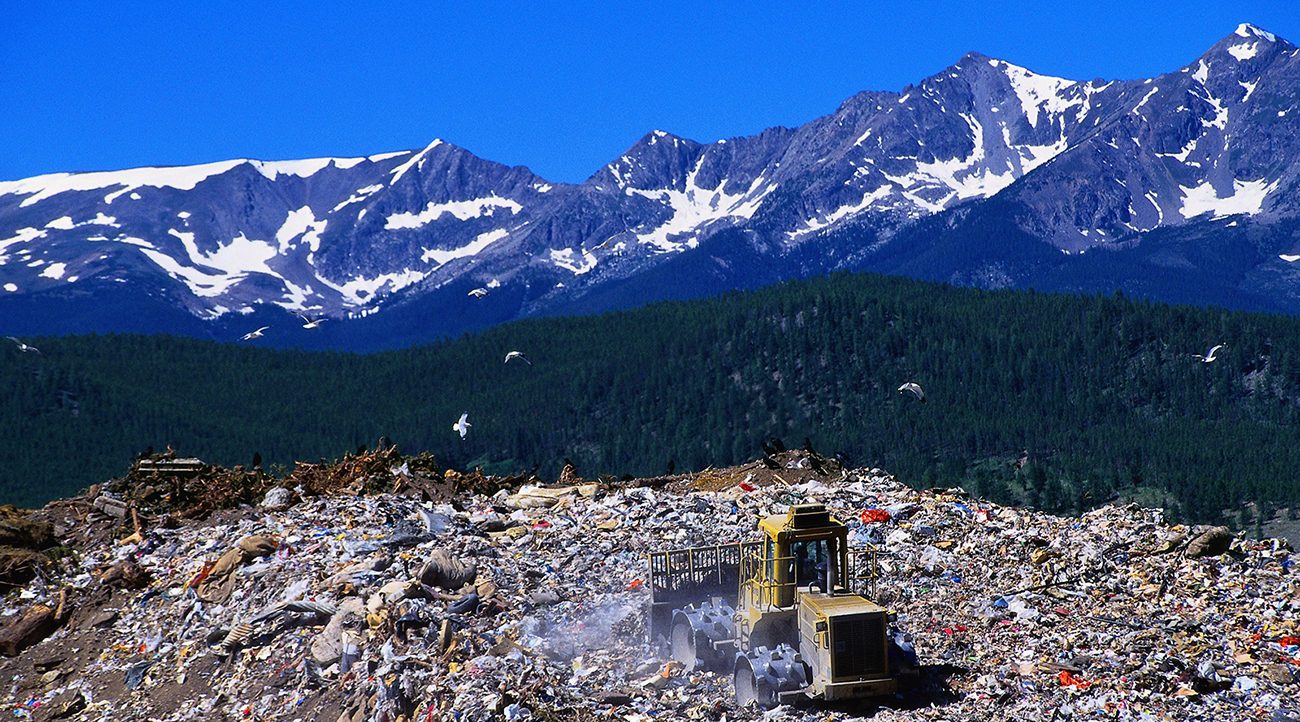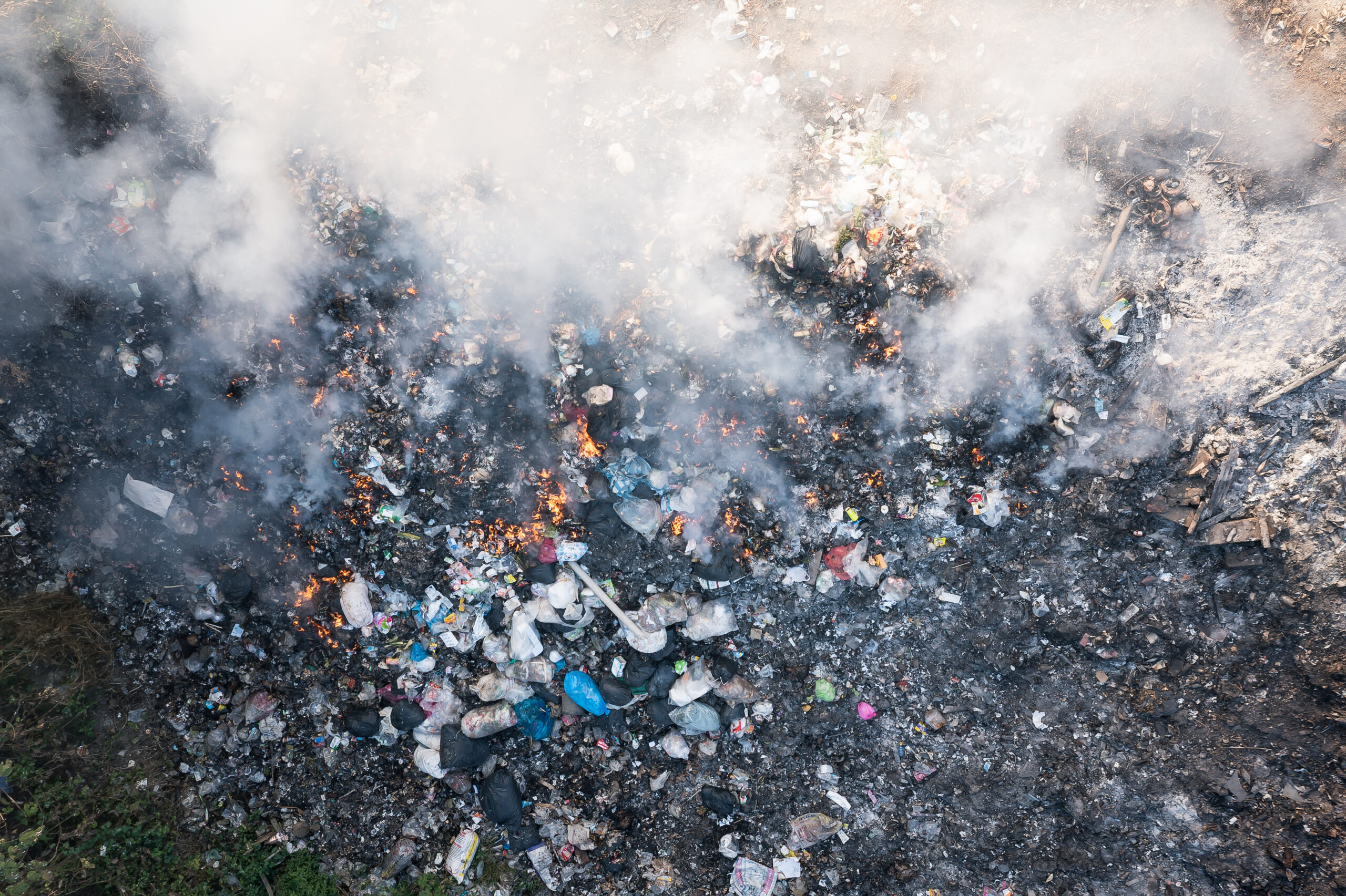When landfills heat up unexpectedly, the results can be disruptive. Elevated Temperature Landfills (ETLFs) are landfill sites where internal temperatures rise significantly above normal operating ranges (>55°C), often exceeding 80°C (176°F). These are not landfill fires, but the result of complex chemical and biological reactions deep within the waste mass that can lead to changes in gas composition, odors, structural instability, and changes in leachate volume composition.
EREF is working to better understand why ETLFs form, how to detect them early, and what can be done to prevent or mitigate their impacts.
Why Does It Matter?
Elevated temperatures in a landfill may:
- Damage gas collection, leachate, and liner systems
- Accelerate waste settlement and threaten slope stability
- Increase leachate strength
- Suppress methane production
- Cause odorous emissions and operational difficulties
Understanding how and why these conditions form is key to prevention and control.
Chemical Drivers
Certain wastes react with moisture and CO₂, releasing heat:
- Ash hydration and carbonation: Reactions of coal ash and MSW ash with moisture and CO₂ can release significant heat.
- Metal corrosion: Especially aluminum and iron, can undergo oxidation and corrosion that is highly exothermic.
These reactions are especially intense in ash-rich or aluminum-laden waste streams.
Microbial Shifts
Elevated temperatures disrupt the normal anaerobic decomposition that produces methane:
- Under ETLF conditions, normal anaerobic decomposition breaks down.
Together, these processes create a feedback loop that amplifies heat and degrades landfill performance.
| Feature | Normal Landfill | ETLF |
|---|---|---|
| Temp | < 55°C (< 131°F) | 80–100+ °C (176–212°F) |
| Gas Output | Methane-rich | Lower CH₄, higher CO₂, H₂, VOCs |
| Waste Decomp. | Mostly anaerobic | Mixed or disrupted pathways |
| Settlement | Gradual | Rapid, uneven |
| Leachate | Moderate | Higher strength |
| Odor | Minimal | Sulfides, VOCs, strong odorants |
What You Need to Know
Elevated temperatures rarely arrive without warning. These are the early indicators that a landfill may be trending toward ETLF conditions:
-
Spike in gas well temperatures
Sudden increases above 55°C signal abnormal activity underground. -
Drop in methane (CH₄) levels
Indicates disruption of normal anaerobic decomposition. -
Increased CO₂, hydrogen (H₂), carbon monoxide (CO), or VOCs
Suggests chemical reactions and microbial shifts are underway. -
Strong, persistent odors
Often sulfuric or sour, due to disrupted gas pathways or new microbial byproducts. -
Accelerated waste settlement
Unusual or rapid differential settlement can compromise slope stability. -
Leachate volume spikes or chemistry changes
More leachate, higher temperatures, or higher concentrations of metals and sulfides.
To understand ETLF behavior, it’s not enough to track just temperature. You need to see the whole heat system — from cause to consequence.
Modeling the Heat
EREF-supported research developed two powerful models:
-
Batch Reactor Model: Evaluates how specific waste types (like ash or aluminum) generate heat.
-
3D Finite Element Model (FEM-3DM): Simulates waste placement, landfill layering, and how heat moves through the landfill over time.
Both models help operators predict problem zones, assess risk scenarios, and develop smarter acceptance strategies.
Tools That Work
-
Fiber-Optic Temperature Sensing (FODTS) for real-time thermal profiling
-
Vibrating Wire Transducers (VW) to monitor in-situ pressure
-
Gas composition monitoring (CH₄/CO₂/H₂/VOCs) for early chemical indicators
Smart data means smarter decisions. Modeling heat behavior helps prevent costly surprises.
How to Prevent ETLFs
Avoiding thermal buildup starts with understanding your inputs.
-
Know what’s in your waste stream. Screen for high-risk materials like:
-
Coal or MSW ash
-
Aluminum-rich materials
-
-
Test before you accept. Use calorimetry to measure heat generation potential.
-
Pre-treat if needed. Hydrate ash before burial to eliminate one major source of heat.
-
Limit co-disposal of reactive materials with organics.
Managing the Problem
If elevated temperatures are already occurring:
-
Adjust gas extraction to prevent oxygen intrusion
-
Enhance leachate drainage to remove heat and moisture
-
Monitor pressure and temperature in real-time
A proactive strategy is cheaper, safer, and more effective than reacting to failure.
Knowledge Base
The EREF Knowledge Base is designed to help users navigate and understand selected EREF research. It draws solely from the uploaded materials, but as an automated system, it may misinterpret content, omit context, or provide incomplete responses. All information generated by the tool should be verified against the original report(s).
EREF makes no warranties regarding the accuracy, completeness, or suitability of chatbot responses and assumes no liability for actions taken in reliance on this tool. For definitive answers or additional guidance, please contact marcomm@erefdn.org.
Explore the Science
Additional Research
To view Scholars who have worked or are currently working on research projects related to ETLFs, visit our Scholar page.
Hao, Z., Sun, M., Ducoste, J. J., Benson, C. H., Luettich, S., Castaldi, M. J. and M. A. Barlaz, 2017, “Heat Generation and Accumulation in Municipal Solid Waste Landfills,” Env. Sci. & Technol., 51, p. 12434 – 42.
Hao, Z., Barlaz. M. A. and J. J. Ducoste, 2020, “Finite Element Modeling of Landfills to Estimate Heat Generation, Transport and Accumulation,” J. Geotech. and Geoenvironmental Eng., 146, 12, 04020134.
Schupp, S., de la Cruz, F., Cheng, Q., Call, D. F., M. A. Barlaz, 2021, “Evaluation of the temperature range for biological activity in landfills experiencing elevated temperatures,” ACS ES&T Engg, 1, 2, p. 216-227.
Tupsakhar, S., Moutushi, T., Castaldi, M. J., Barlaz, M. A., Luettich, S. and C. H., 2020, “The impact of pressure, moisture and temperature on pyrolysis of municipal solid waste under simulated landfill conditions and relevance to the field data from elevated temperature landfill,” Sci. of the Total Env., 723, p. 138031
De la Cruz, F.B., Cheng, Q., Call, D. F., and M. A. Barlaz, 2021, “Evidence of Thermophilic Waste Decomposition at a Landfill Exhibiting Elevated Temperature Regions,” Waste Management, 124, p. 26 – 35.
Narode, A., Pour-Ghaz, M., Ducoste, J. J. and M. A. Barlaz, 2021, “Measurement of heat release during hydration and carbonation of ash disposed in landfills using an isothermal calorimeter,” Waste Management, 124, p. 348 – 55.
Hao, Z., Barlaz, M. A., and J. J. Ducoste, 2024, “Quasi-mechanistic 3D finite element model predicts temperatures in a U.S. landfill,” ACS EST Engineering, 4, 2, p. 310 – 317.
Narode, A., Hao, Z., Pourghaz, M., Ducoste, J. J. and M. A. Barlaz, 2024, “Measurement and Temperature Prediction from Ash Disposed in Landfills Using a Quasi-Adiabatic Flow Reactor,” ACS EST Engineering, 4, 2, p.310-17.
FAQs
The National Waste & Recycling Association has compiled a list of commonly asked questions and FAQ’s regarding elevated temperature landfills. To view the PDF, click here.





